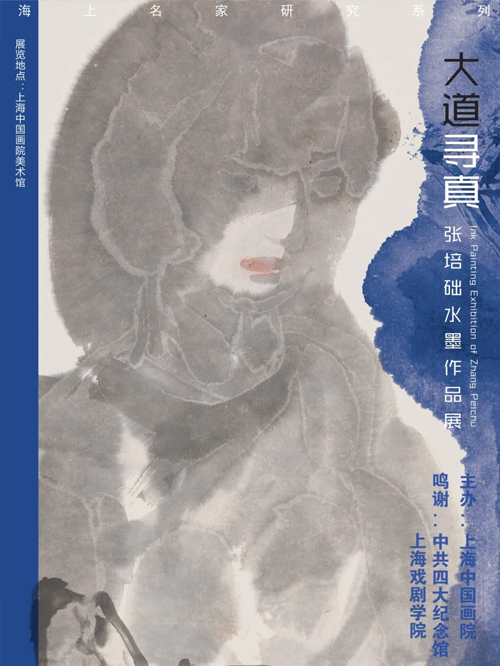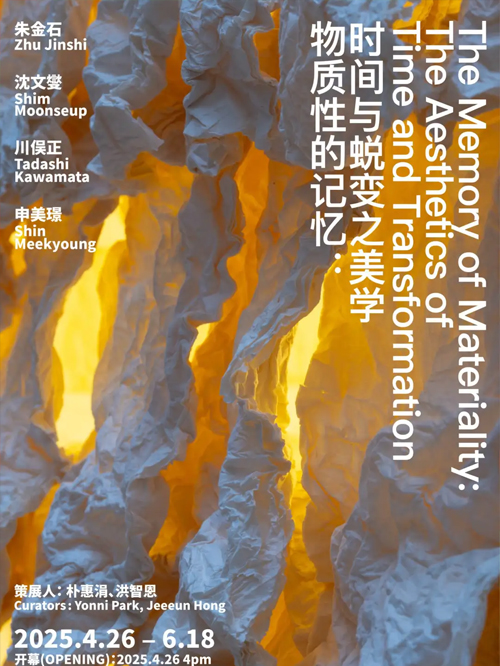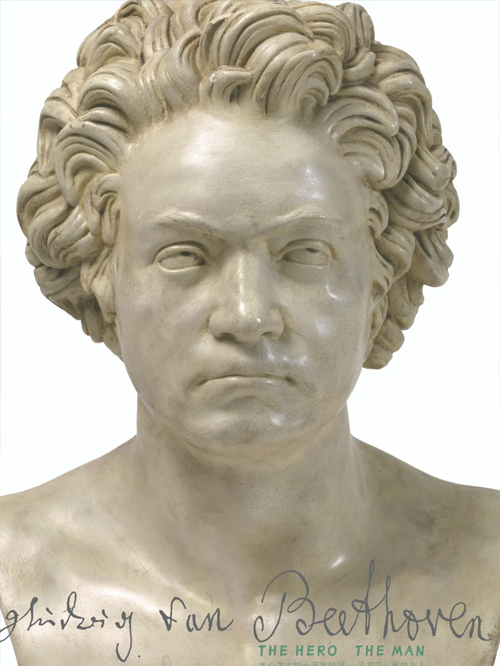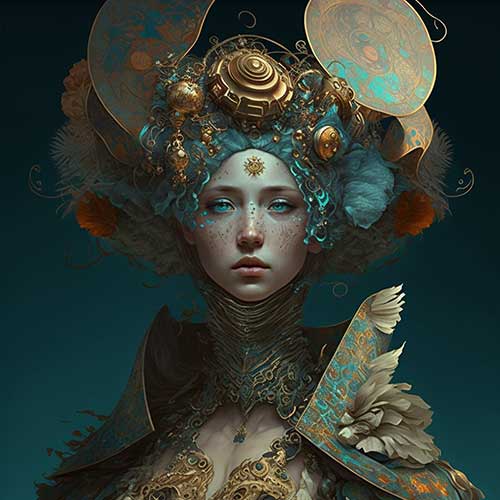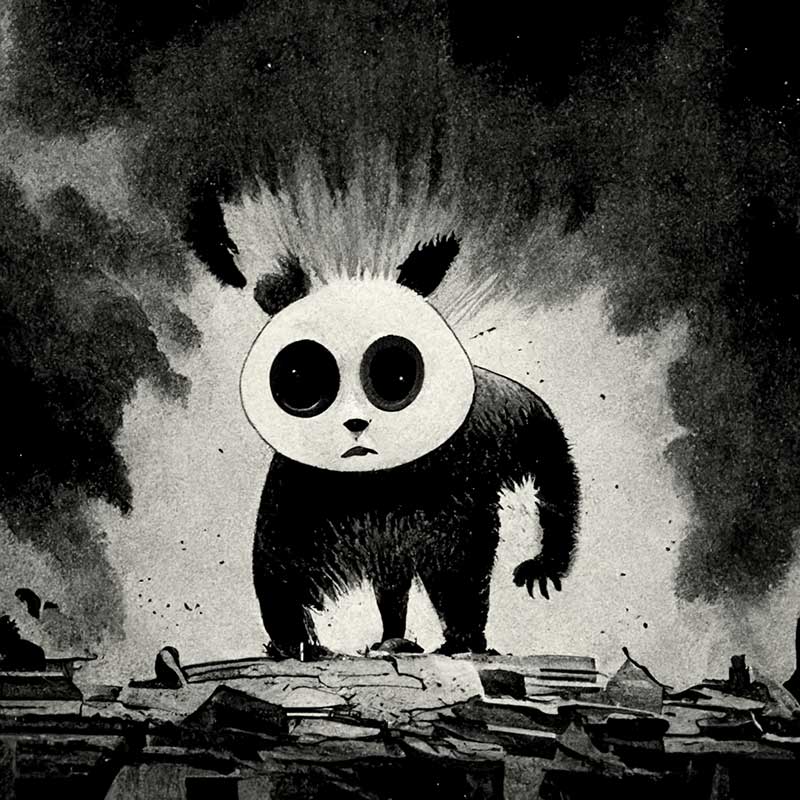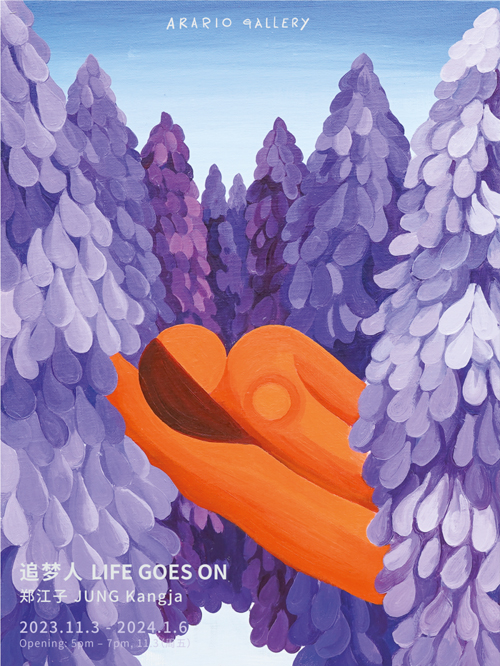阿拉里奥画廊欣然宣布将于2023年11月3日至2024年1月6日呈现韩国艺术家郑江子(1942年-2017年)个展《追梦人》(Life Goes On)。展览将不仅涵盖其不同时期的绘画作品,也将展出艺术家创作于 1968年的装置作品《压》(To Repress)。作为韩国二十世纪六七十年代现场行为艺术与实验艺术的先驱,郑江子对韩国艺术界乃至韩国社会产生了深远的影响。在本次展览中,记录她早期艺术实践的影像档案也将同时呈现,期待观众对郑江子的艺术有更全面的了解。
ARARIO GALLERY SHANGHAI is pleased to present the solo exhibition of Korean artist JUNG Kangja (1942-2017) from 3 November 2023 to 6 January 2024. The exhibition will include not only paintings from different periods of her career, but also showcase the installation work “To Repress” created in 1968. As a pioneer of performance and experimental art, JUNG has had a profound impact on the Korean art world and even on Korean society. Archives documenting her early artistic practices will also be displayed, offering viewers a more comprehensive picture of JUNG's artistic journey.
二十世纪六七十年代的韩国正值军事独裁时期,尽管彼时经济处于快速增长的状态,但社会动荡、公民的权利被压制。1967年,郑江子从弘益大学绘画系毕业后,便加入了韩国先锋艺术团体“新展览小组(Shin Jeon)”和“第四组(The Fourth Group)”,并参与了具有里程碑意义的展览《韩国青年艺术家协会展》(Korean Young Artists Association Exhibition, National Public Information Office, Seoul, Korea,1967),该展览集结了一众挑战主流艺术的年轻艺术家,他们通过身体和表演将政治引入艺术语境,以此来对抗当时僵化的社会意识形态。
During the military dictatorship of the 1960s and 1970s, Korea was experiencing rapid economic growth but social unrest and suppression of citizens' rights. Against this backdrop, JUNG graduated from the western painting department of Hongik University in 1967, and joined the avant-garde Korean art groups "Shin Jeon" and "The Fourth Group." In the same year, she participated in the landmark exhibition titled "Korean Young Artists Association Exhibition", which gathered a group of young artists who challenged the mainstream of art by introducing politics into the context of art, attempting to resist the rigid societal ideologies.
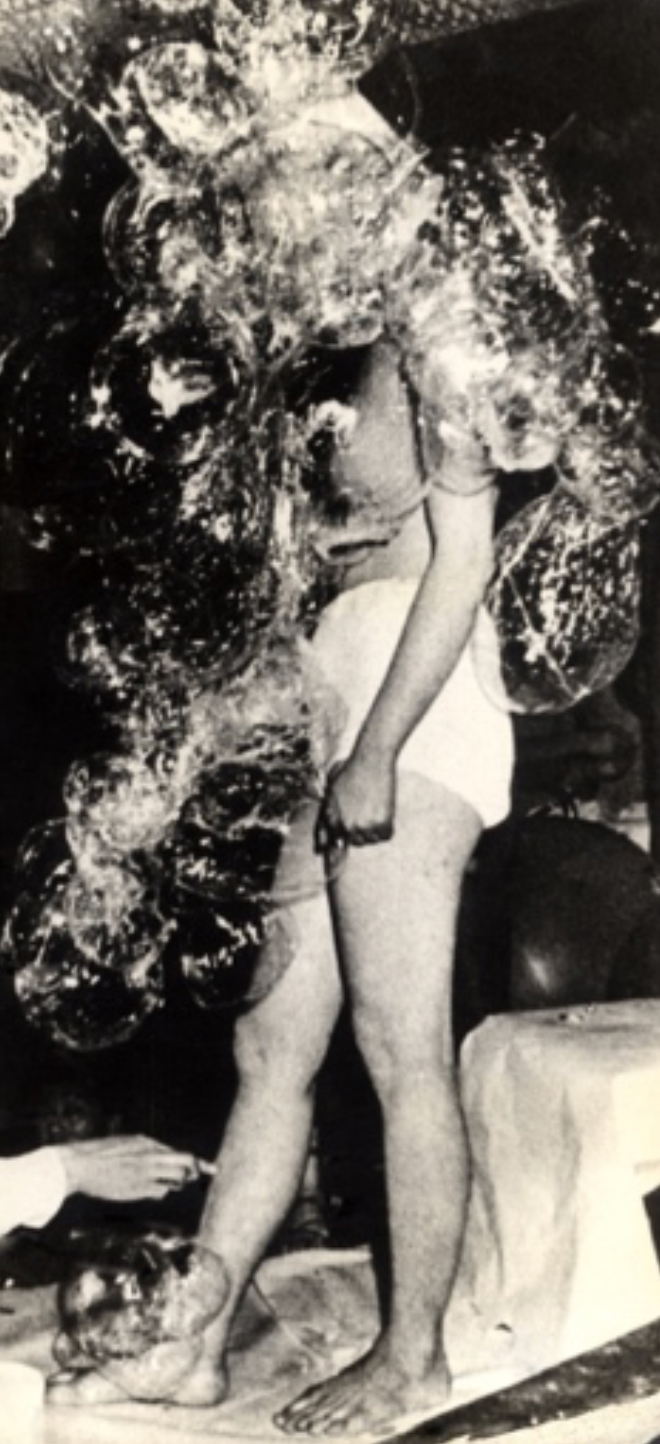
郑江子行为表演现场,1968年 Live Performance of JUNG Kangja, 1968
Kukjin Kang、Kangja Jung、Chanseung Jung,《透明气球与身体》(Transparent Balloons and a Nude),1968.5.30,C'est Si Bon Music Café,首尔,韩国 ⓒ 2023 Kangja Jung
1968年,郑江子与韩国艺术家姜国振Kang Kukjin(1939-1992)、郑灿胜Jung Chanseung(1942-1994)合作完成了行为艺术作品《透明气球与身体》(Transparent Balloons and a Nude, 1968),在行为表演现场,两位艺术家将郑江子的衣饰退去后,邀请在场观众在她半裸的身体上悬挂透明气球,然后将其一一戳破。当所有气球被戳破后,郑江子离开舞台。在表演进行的过程中,郑江子处于完全被动、任人支配的境遇,揭示了当时韩国女性的社会地位。而透明气球则可看作是女性境遇的具象比喻,从气球被固定在女性身体上(社会对女性社会角色的期望),到气球被戳破(身体被观看、利用),再到气球泄气的过程(时间流逝渐渐失去价值),最后气球呈现干瘪的状态(被舍弃),在这一连串的过程中,透明气球的遭遇,即是当时那个时代大多数女性的命运。而这次行为表演本身也是对当时保守社会风气的挑战。
In 1968, JUNG collaborated with Korean artists Kang Kukjin (1939-1992) and Jung Chanseung (1942-1994) on a performance art titled "Transparent Balloons and a Nude (1968)”, in which audience were invited to hang transparent balloons on her half-nude body, subsequently popping them one by one. When all the balloons were burst, JUNG left the stage. The performance itself challenged the conservative social norms of the time. Throughout the performance, JUNG was completely passive and at the mercy of others, and the transparent balloons, on the other hand, served as a tangible metaphor for women's circumstances: from the balloons being affixed to the female body (society's expectations of women's roles) to being burst (the body being gazed and utilized) and their deflation process (gradually losing value as time passes by) until they appeared shriveled (being discarded). The performance revealed the societal situation of most women in that era.
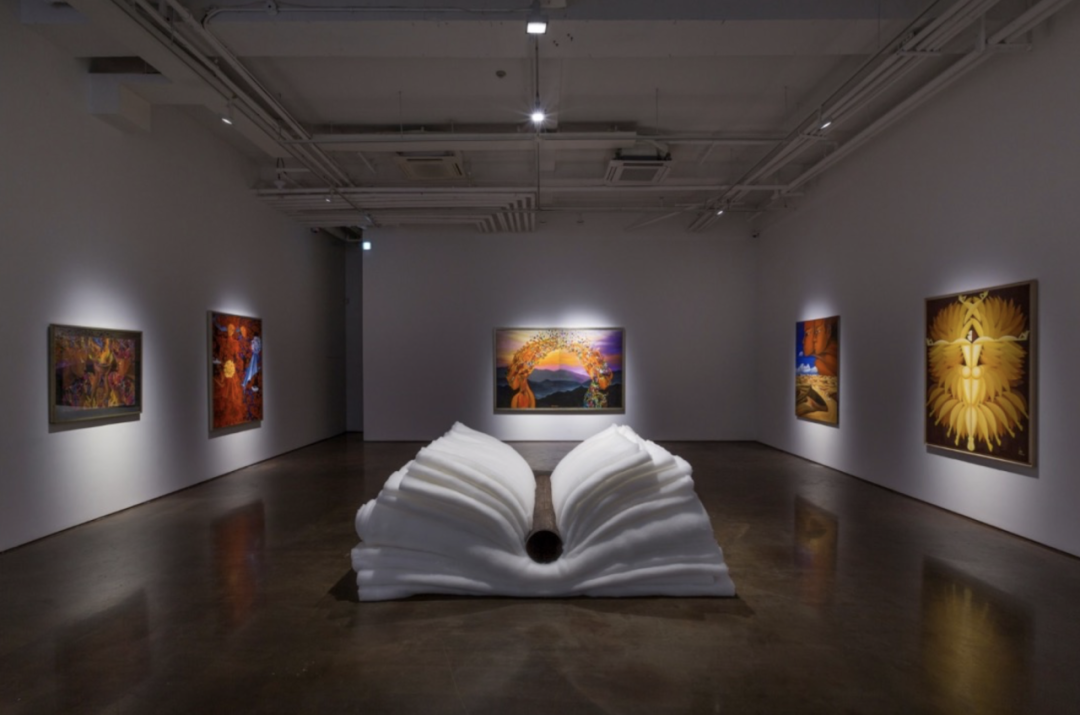
展览现场《我希望最后一次旅行是月球之旅》,阿拉里奥画廊,韩国首尔,2018
Installation View of I WANT MY LAST TRIP TO THE MOON, ARARIO GALLERY, Seoul, Korea, 2018
1969年,装置作品《压》(To Repress,1968)首次展出于《韩国日报邀请展》(1969)。郑江子称“这件作品是女性被压迫的象征”。轻柔的棉花被沉重的钢管压制,却始终不敌钢管的重量而发生形变。无暇的棉白与斑驳的铁锈、前者柔软温暖,后者坚硬冰冷,艺术家运用举重若轻的艺术手法,赋予了这件作品直观的矛盾张力及痛感。相较于郑江子同时期的行为艺术作品,这件装置作品在当时并未受到足够的关注,艺术家本人却十分重视这件作品。根据作品照片和草图,2018年,在她生前筹备的最后一次个展上,《压》被重新制作并再次展出。
In 1969, the installation "To Repress (1968)" was first displayed at “Hankook Ilbo Invitation Exhibition” in Seoul. It “depicts the oppressed existence of women,” the artist stated. The work consists of the soft cotton pressed down and deformed by a heavy steel pipe, unable to withstand the weight of it. By the comparison of flawless white and mottled rust, soft warmth and rigid coldness, viewers can perceive a palpable tension and sense of pain from the work. Compared to the performance art she created around the same period, this work didn't receive adequate attention. However, the artist herself attached great importance to this work. With the sketch and the photo of the installation, in 2018, this work was remade and exhibited again in the last solo exhibition she prepared before her death.
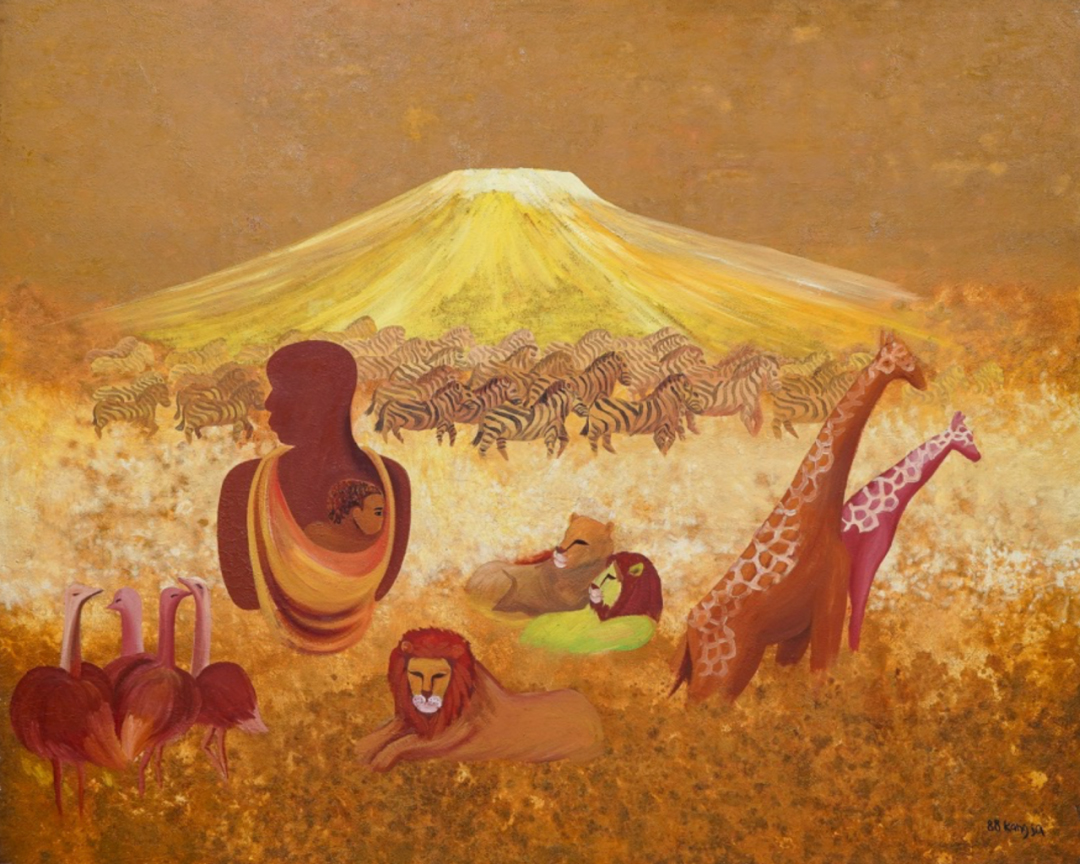
乞力马扎罗山和游猎 Kilimanjaro and Safari, 布面油画 oil on canvas, 130 x 162 cm, 1988
七十年代伊始,韩国政府开始对当时激进的艺术活动实施严厉的制裁。1977年,郑江子随家人移居新加坡生活,1982年返回韩国。在新加坡期间,无论生活境遇如何,郑江子始终保持着对创作的热情与持续投入,她学习了印度传统蜡染(Batik)并在新加坡完成了一系列蜡染作品。1982年起,她逐渐将创作重心转向绘画,通过抽象绘画延续她在社会意识和身份认同上的表达。她开始频繁前往那些未受现代文明侵蚀的远方,并从旅途中汲取创作灵感。她穿越尼日尔的浩瀚的撒哈拉沙漠,在乞力马扎罗山下画狮子与长颈鹿,在冈比亚画服装市场里的妇女……这一系列的作品记录了远方原始的生命力,也承载着郑江子梦幻的想象,以及她的梦想与热爱。
At the dawn of the 1970s, the Korean government began to impose severe sanctions on radical art movements. In 1977, JUNG moved to Singapore with her family, and returned to Korea five years later. From 1982 onward, she gradually shifted her focus to painting, through which her expression on social consciousness and sense of identity continued. She began to travel frequently to faraway places untouched by modern civilization and drew inspiration from her journeys. She traversed the vast Sahara Desert in Niger, painted lions and giraffes at the foot of Mount Kilimanjaro, and women in the clothing markets of Gambia… This series of works captured the raw vitality of distant lands, and embodied JUNG's fantastic imagination, as well as her dreams and passions.
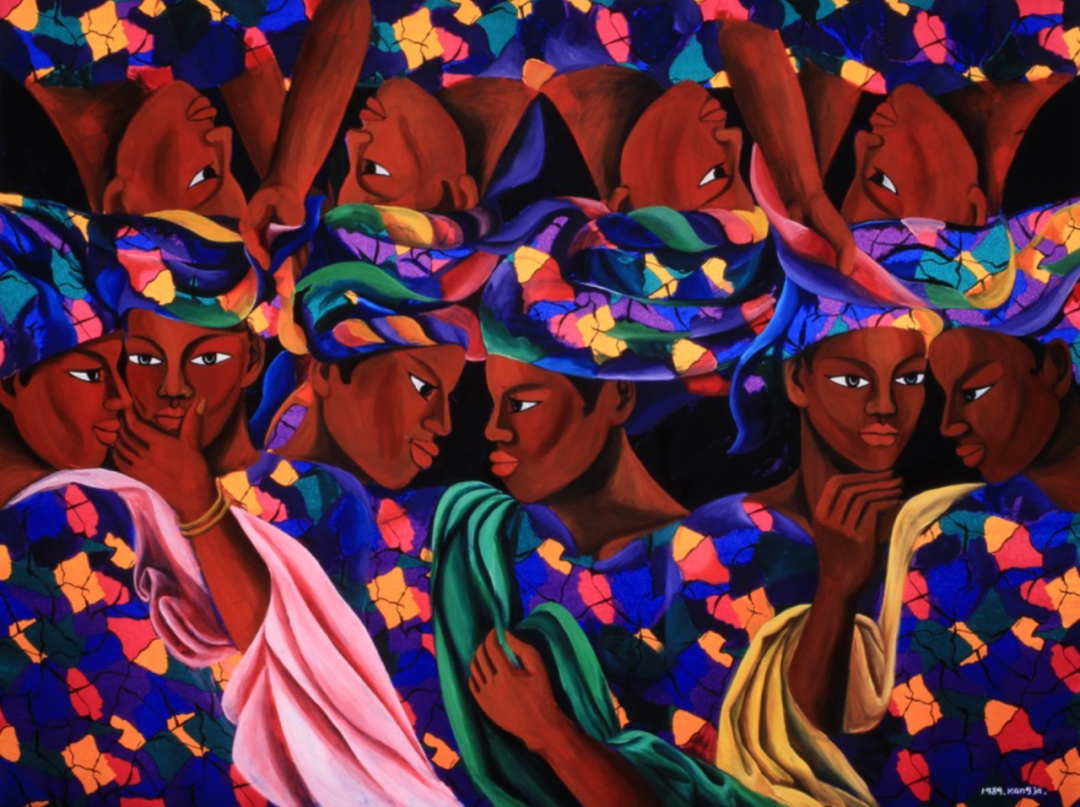
服装市场里的妇女(冈比亚) The Women in a Clothes Market (Gambia), 布面丙烯 Acrylic on canvas, 160 x 200.5 cm, 1989
郑江子在她艺术生涯的后期仍然在寻求突破和新的尝试。她依然对现实中具体的事物保有兴趣,但不会将自己的创作局限于某种特定的范式。她将所有的物体还原为几何形式的半圆,并通过这种新的艺术语言进行创作实验。她认为圆和直线作为宇宙中所有物体的最小单位,是最本质的存在。她希望通过 “自己的方式在一个无限的、自由的、无拘无束的空间里展开想象,解放自我”。
In the later stages of her artistic career, JUNG continued to seek breakthroughs and new challenges. While she maintained an interest in tangible objects from reality, she was not confined to any specific paradigm. She deconstructed every object into its geometric form of a semi-circle, and believed that circles and straight lines, as the smallest units of all objects in the universe, represent the most fundamental essence. She wanted to liberate herself through “imaginations that I stretch in my own way in an unlimited, free space that is bound to nothing.”
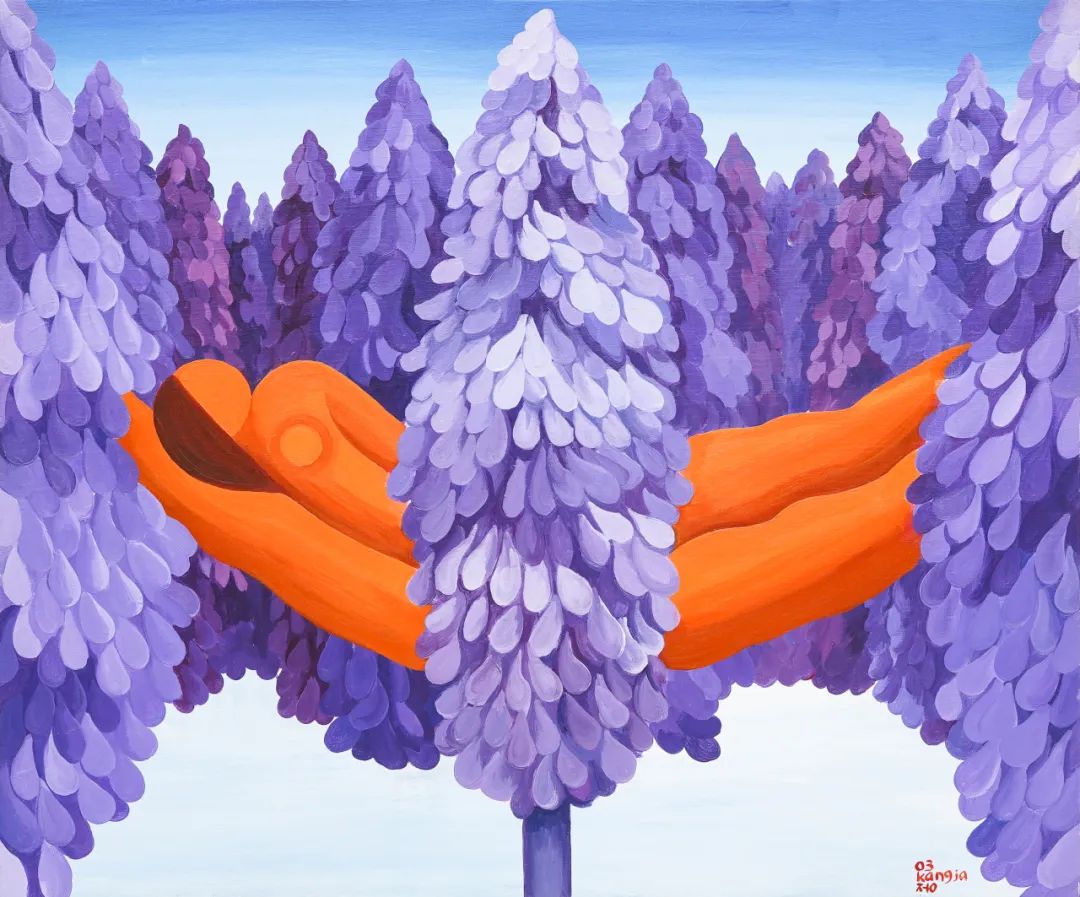
无题 Untitled, 布面油画 oil on canvas, 61 x 73 cm, 2003
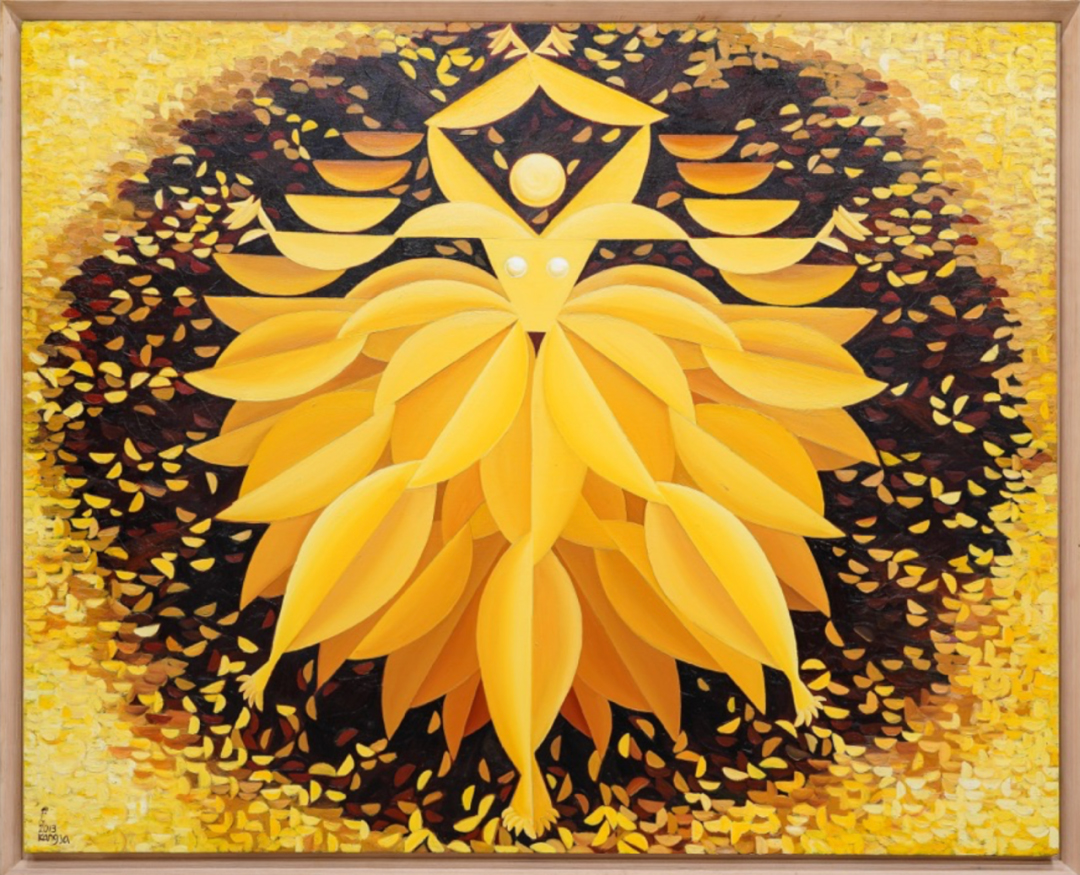
太阳神之舞 Dance of the Sun Godness, 布面油画 oil on canvas, 130 x 162 cm, 2013
郑江子每个阶段的创作都伴随着她的生活足迹展开,也映照着她的梦想与孤独。她活跃于二十世纪六七十年代韩国实验艺术的前沿,却未被重视,直到2000年她的艺术成就才被重新发现及肯定。近期,郑江子的处女作《吻我》(Kiss Me.)在首尔国立现当代艺术博物馆(MMCA)策划的巡展《永远年轻:1960-1970年代韩国实验艺术》中呈现,展览目前正在纽约古根海姆博物馆呈现,并计划于明年初巡展至洛杉矶哈默博物馆。
JUNG’s creations at every stage unfolded along with her journey of life and mirrored her dreams and loneliness. She was active at the forefront of Korean experimental art in the 1960s and 1970s, but was underappreciated until 2000, when her artistic achievements were rediscovered and recognized. Recently, JUNG's debut work, "Kiss Me" was showcased in the touring exhibition "Only the Young: Experimental Art in Korea, 1960-1970s", curated by the National Museum of Modern and Contemporary Art (MMCA) in Seoul. The exhibition is currently on view at the Guggenheim Museum in New York and is scheduled to tour the Hammer Museum in Los Angeles early next year.
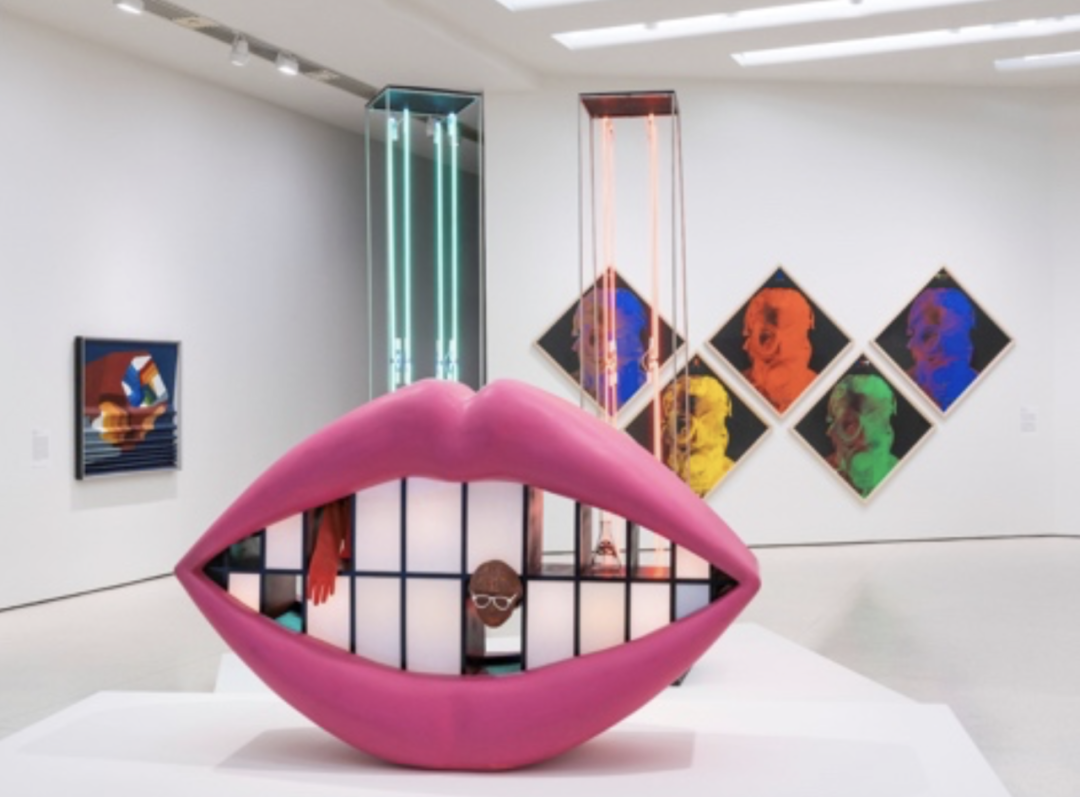
展览现场《永远年轻:1960-1970年代韩国实验艺术》,古根海姆美术馆,美国纽约
Installation View of Only the Young: Experimental Art in Korea, 1960s-1970s, Solomon R. Guggenheim Museum, New York, USA
郑江子的作品展现出昂扬的生命力,但她的创作之路却是一段孤独而艰辛的旅程。尽管如此,她却从未停止创作,她视艺术为生命,一生都在追求艺术之梦。现在,她已然走出了时间,但她的艺术生命将通过她的作品继续存在。
JUNG's works radiate a vibrant vitality, yet her path of creation has been a lonely and arduous journey. Despite this, she never ceased creating, but regarded art as her life and constantly pursued the dream of ideal. Now, she left us, but her spirit will continue to exist alongside her works.
